April 2025

The lancets market size is expected to increase from USD 1.59 million in 2025 to USD 2.42 million by 2034, growing at a CAGR of 4.77% throughout the forecast period from 2025 to 2034. The rising prevalence of diabetes, the increasing geriatric population, and the demand for at-home tests drive the market.
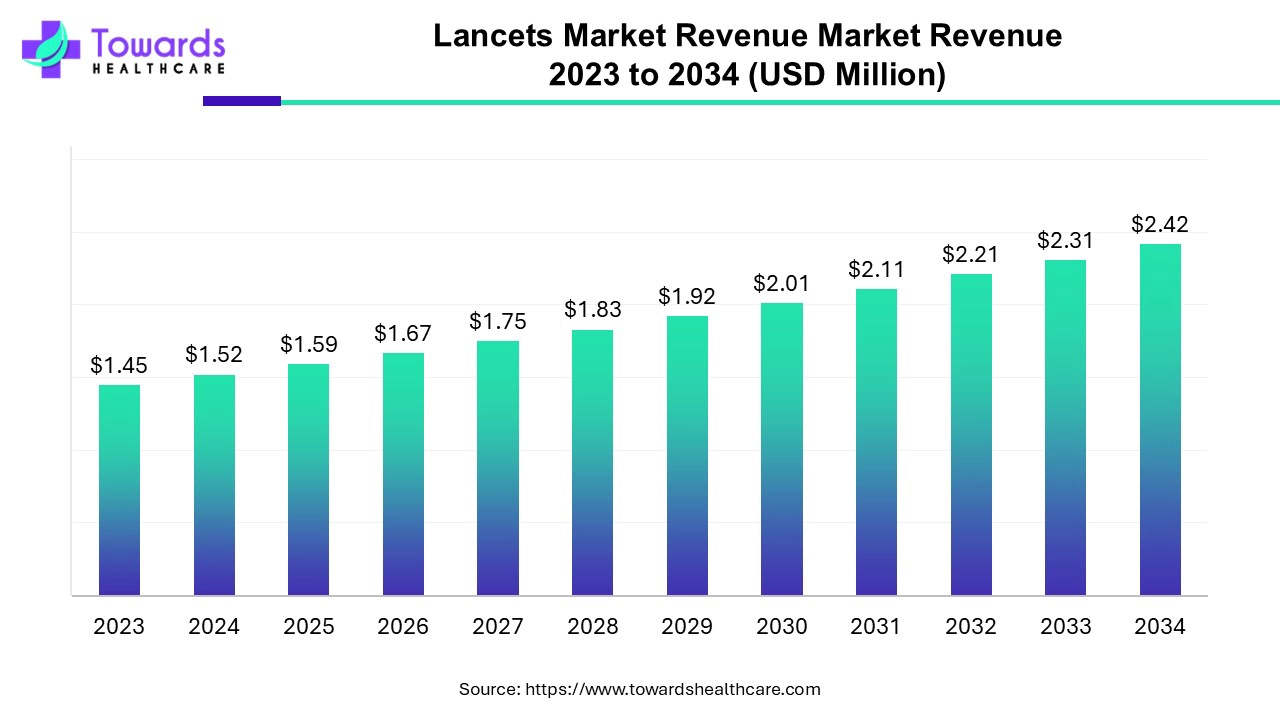
Lancets are small, sharp needles used to prick the finger's skin to withdraw a small amount of blood. They are only suitable for single use and are usually disposable. They are predominantly used to withdraw blood for diabetes monitoring. They are also used in several at-home tests for allergies, sexually transmitted infections, cholesterol, ketones, uric acid, hemoglobin, and HbA1c.
The rising prevalence of type I and type II diabetes drives the market. Around 422 million people worldwide are suffering from diabetes. The advent of lancing devices also boost the market. Lancing devices are designed to hold the lancet and can automatically withdraw the blood by just placing it on the skin. They can simplify the process of collecting blood, especially in children and the geriatric population. The market is also driven by increasing incidences of allergies, cholesterol, and sexually transmitted infections.
The rising demand and sales of lancets worldwide demand the latest innovations to improve patient compliance. Conventional lancets are painful for many patients and carry the risk of injury. However, the latest innovations promote the development of lancets to enhance efficiency and improve patient experience. Novel lancets enhance safety through pre-sterilized and retractable needles. Some modern lancets also have the feature of adjustable depth settings, allowing healthcare professionals to use personalized lancets and predetermine the amount of blood required for different tests. Additionally, some lancet needles are hidden in the device and collect blood by pressing a button. This reduces the fear of needles among patients and also minimizes the sensation of needles. Furthermore, advancements in nanotechnology drive the latest innovations in nano-lancets. Researchers are also investigating the development of lancets with integrated sensors to provide real-time data.
The needlestick injuries may pose a significant threat to the lancets market. The needle or lancet is pricked to withdraw a small amount of blood. This process is painful and can cause hard calluses in many patients. The injury can also lead to blood-borne diseases like Hepatitis B, Hepatitis C, and HIV.
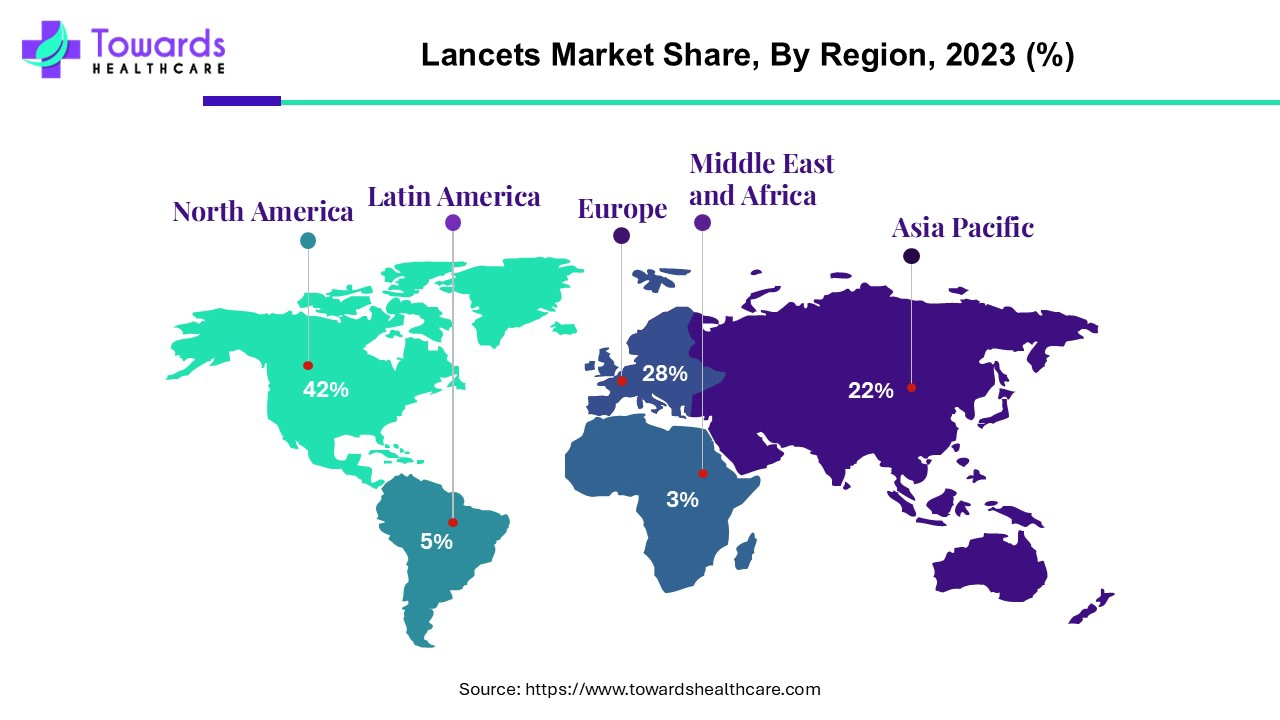
North America held the largest share of the market by 42% in 2023. The rising prevalence of chronic disorders, advanced healthcare infrastructure, demand for at-home tests, and increasing investments drive the market. According to the Centers for Disease Control and Prevention, more than half of the US citizens are suffering from cholesterol. This further increases the need to monitor cholesterol levels in the blood, thereby promoting the lancets market. The presence of key players also boost the market. Several government bodies, such as the US FDA and CDC, have released guidelines for the safe use and disposal of lancets.
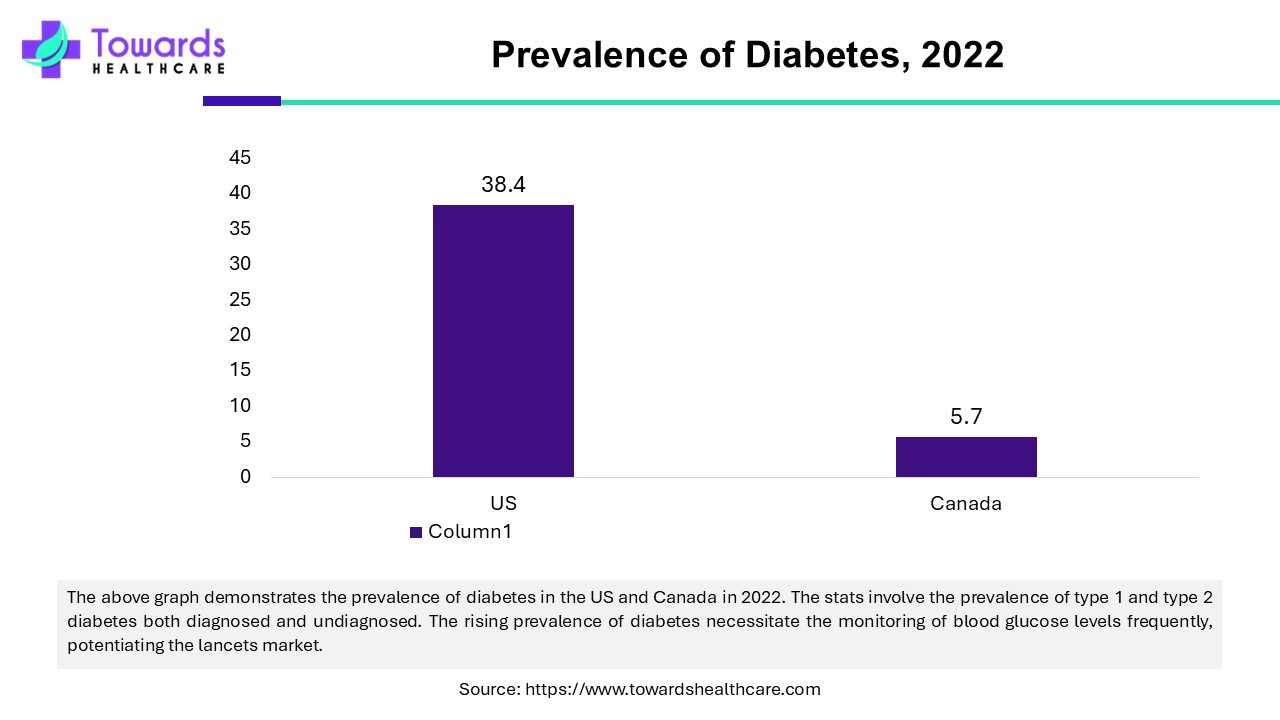
Asia-Pacific is anticipated to grow at the fastest rate in the lancets market during the forecast period. The rising geriatric population, growing healthcare infrastructure, and increasing investments & collaborations drive the market. The prevalence of chronic illnesses such as diabetes and cholesterol rises due to the increase in geriatric population. Approximately 28.7% of the population in Japan is 65 years or older. In China, approximately 280 million people were 60 years and above age in 2022, and the total diabetes rate was the highest, i.e., 27.5 adults per 100 adults in this age group. In India, around 77 million people above 18 years old have diabetes. This promotes the use of blood glucose monitoring devices, thereby increasing the use of lancets.
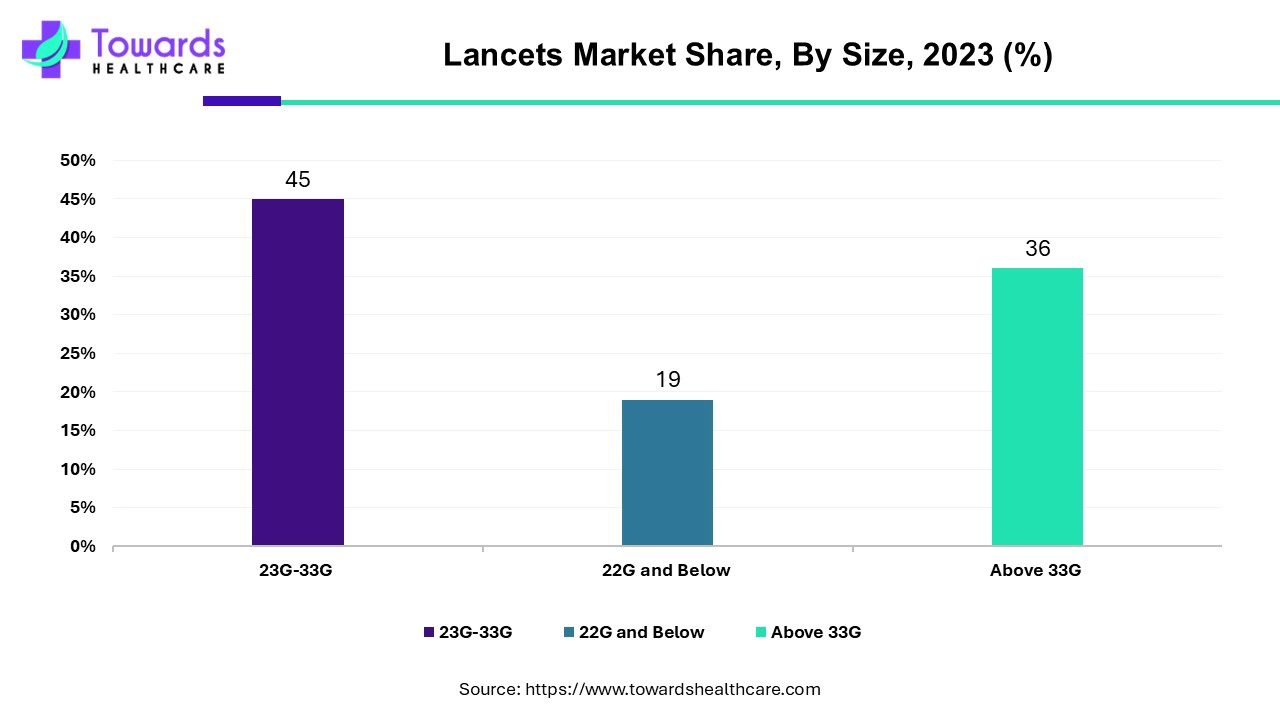
By type, the standard lancets segment held a dominant presence in the lancets market in 2023. Standard lancets are widely preferable due to their simple design and ease of use. They are also comparatively cheaper than safety lancets. The safety lancets segment is expected to grow at the fastest rate in the market during the forecast period. Safety lancets are specially designed to prevent accidental pricks and reduce the risk of infection. The demand for painless blood withdrawal increases the demand for safety lancets.
By size, the 23G-33G segment dominated the lancets market in 2023. The size of the lancet depends on the thickness of the needle. The higher the size number of the lancet, the thinner the needle. 23 gauge to 33 gauge lancets are considered to be the average size of the lancet needle suitable for all types of tests. 23G lancets can be used for thicker skin types, while 33G lancets are used for children and people with sensitive skin. The 22G and below segment is projected to expand rapidly in the market in the coming years. A lancet size of less than 22G is preferred for patients with thicker skin types or to withdraw a larger amount of blood.
By end-use, the hospital segment registered its dominance over the global lancets market in 2023. Lancets are widely used in hospital settings as they provide expert care due to the presence of trained professionals, reducing the chance of injury or infection. Hospitals follow stringent regulatory guidelines for the use and disposal of lancets. The ambulatory surgical centers (ASCs) segment is anticipated to grow with the highest CAGR in the market during the studied years. ASCs are modern healthcare facilities that provide same-day surgical care, including diagnostic and preventive procedures. Lancets are used in ASCs for several diagnostic tests for minor surgeries.
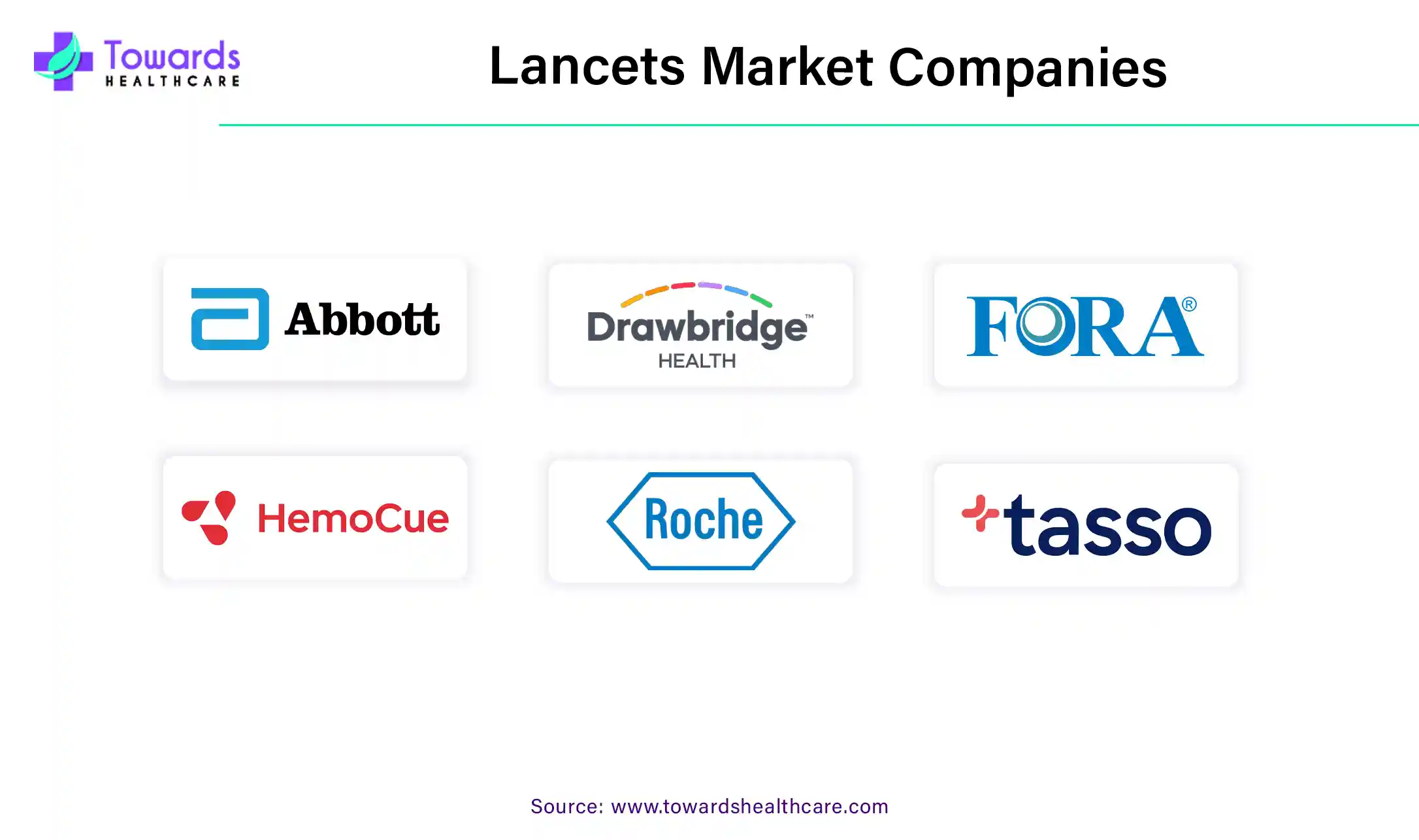
By Type
By Size
By End-Use
By Region
April 2025
April 2025
April 2025
April 2025